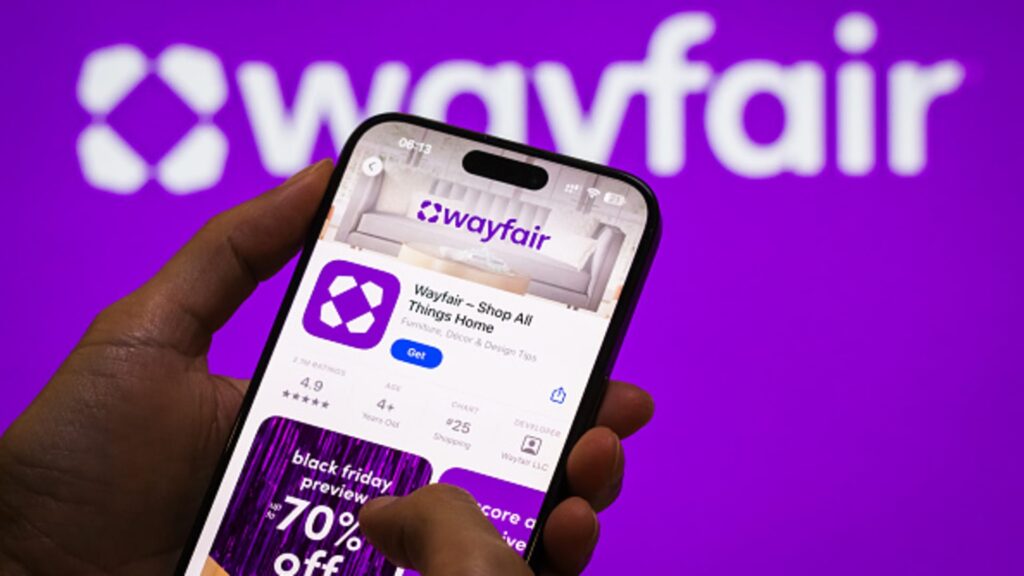
online household goods companies wayfair on Tuesday reported a sharp rise in third-quarter sales, beating Wall Street expectations on both sales and bottom line.
The company said total net revenue increased 8.1% year-on-year.
Here’s how the company performed in the third quarter compared to Wall Street expectations, based on a survey of analysts by LSEG:
Earnings per share: 70 cents adjusted, 43 cents expected; Revenue: $3.12 billion, $3.02 billion expected.
Wayfair stock rose more than 20% in afternoon trading.
For the period ended Sept. 30, Wayfair reported a net loss of $99 million, or 76 cents per share, compared with a loss of $74 million, or 60 cents per share, in the year-ago period.
The company’s U.S. revenue increased 8.6% year-on-year to $2.7 billion, and international revenue increased 4.6% to $389 million. Wayfair announced that its total net revenue, excluding the German exit, increased 9% year over year.
The increase in revenue comes amid recent struggles across the household goods sector, due in part to rising inflation and lower home sales during a period of high interest rates. The industry faces challenges from President Donald Trump’s furniture tariffs, among other tariffs, but taxes on imports from many countries are now lower than what Trump proposed earlier this year.
CFO Kate Gulliver told CNBC that the company’s growth is not driven by macro-related factors such as tariffs or interest rates.
“We believe this is actually driven by our share growth, and we believe that it’s actually a confluence of factors and efforts that we started over a year ago that are now starting to bear fruit,” Gulliver said.
Those efforts include a loyalty program, site improvements, and growth in brick-and-mortar stores, as well as what Gulliver calls the company’s “core recipe” of price, product availability, and speed. Last year, the company opened its first large-format store in Illinois to ride the wave of brick-and-mortar stores. Building on its success, the company plans to open another store in Yonkers, New York in early 2027.
He said that while tariff policy has created uncertainty for the company, it has been able to rely on the strength of its model of operating as a marketplace on the back end and a retailer on the front end.
Gulliver said Wayfair has seen slow sales during a “somewhat difficult” period for the home goods category post-pandemic, but has gained momentum over the past year. Despite the tariff changes, Wayfair’s stock price was up about 95% year-to-date as of Monday’s close.
CEO Niraj Shah added in the earnings call that the company’s delivery orders increased 5% year-over-year in the quarter.
“Our adjusted EBITDA margin of 6.7% marks the highest level achieved in Wayfair’s history, excluding the pandemic period,” Shah said on a conference call with analysts. “As promised, our business is back on track for growth, with strong contribution margins and fixed cost discipline delivering significant profitability.”
Wayfair said it had a total of 21.2 million active customers at the end of the quarter, down 2.3% from a year ago.
Shah added on Tuesday’s call that Wayfair’s growth plans are being driven by “factors that are unique to Wayfair” and “are not dependent on a recovery in the housing market.” He said he saw few isolated examples of early purchases to avoid tariffs, such as the “short-term” increase in large appliance sales in early spring.
“We attribute our outperformance to the structural share gains driven by our strong day-to-day execution of our core recipe, the early success of new programs we were able to launch, and the broader benefits generated by our technology team,” Shah said.

